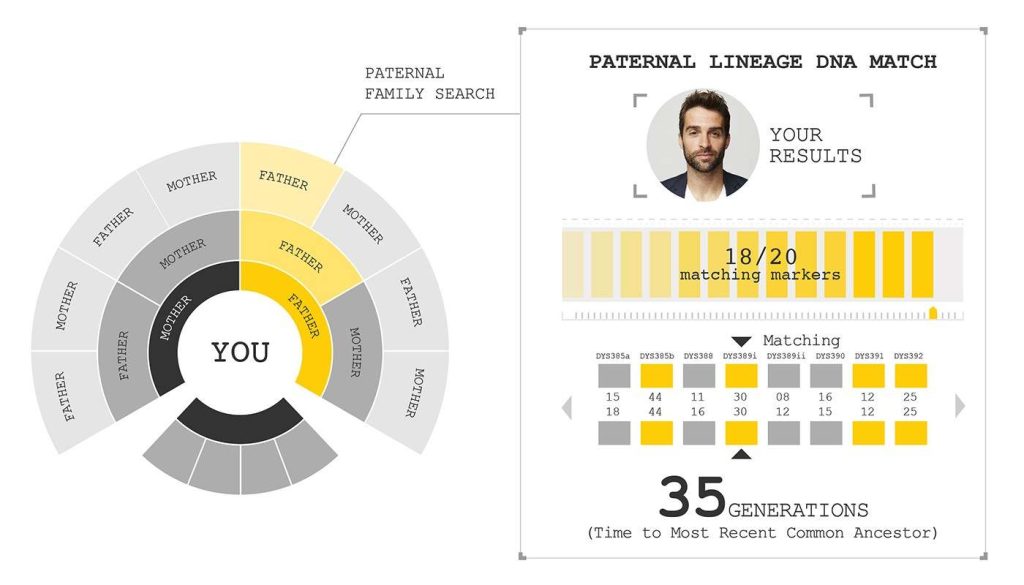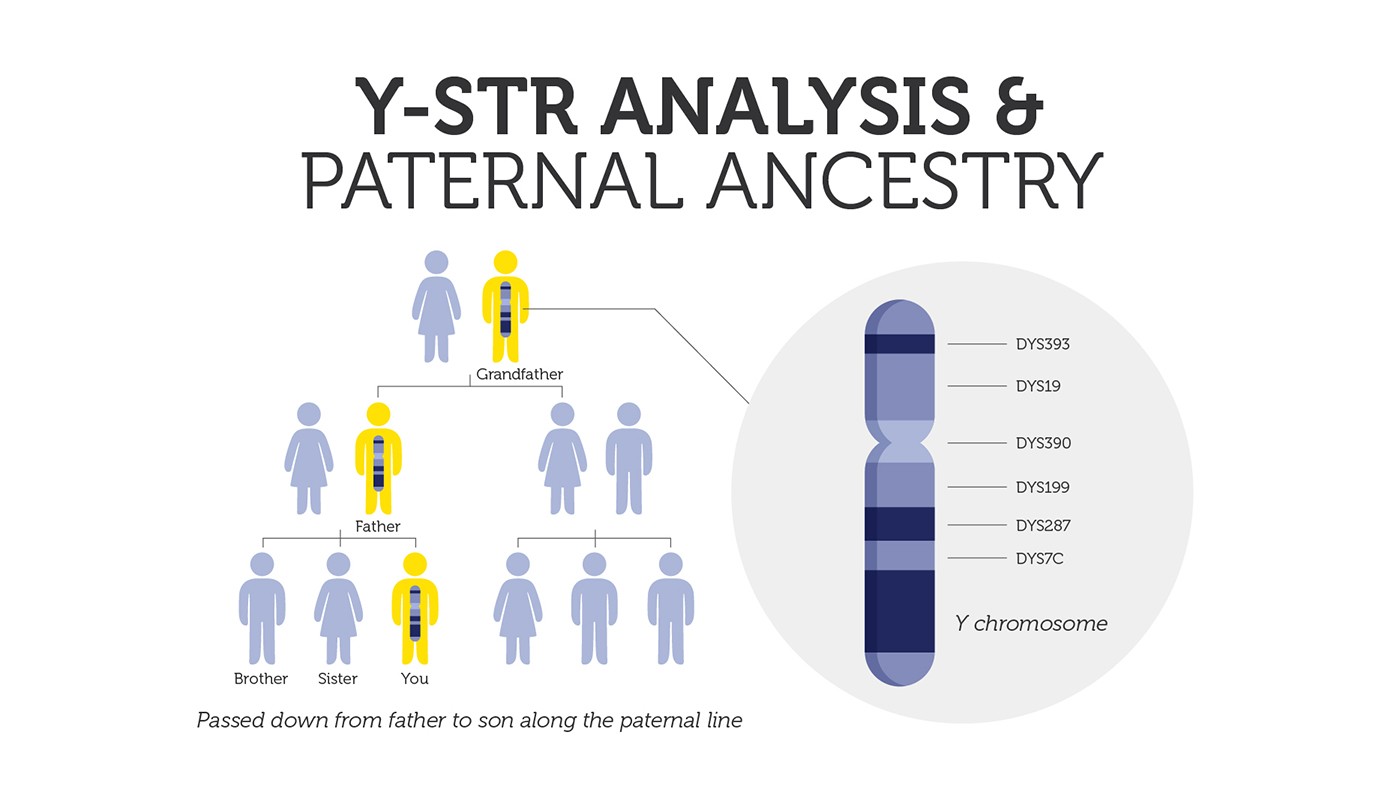You’ve always been proud of your rather unusual last name. So when another man with the last name Quigley sits beside you on the plane one day, you are intrigued. A long conversation during the flight reveals that both of your great-great grandfathers immigrated to North America from Northern Europe.
You both agree that you might be related. So, you exchange contact information and go your separate ways. Even a couple of weeks later, you are still wondering, “Could I be related to this other Quigley?”
There is a simple test that can solve this puzzle – a Y-DNA STR marker test. This DNA test will help you track your paternal lineage, so you can find relatives in your paternal line.
Paternal ancestry testing
Paternal ancestry testing involves looking at DNA variations on the Y-chromosome (Y-DNA). Two major types of DNA changes (markers) are found in the Y-DNA.
One test looks at extremely slow changing markers called SNPs (single nucleotide polymorphisms). The drawback of a Y-SNP test is that it can only give you information about your ancient ancestry. Y-SNP tests don’t provide any information about more recent ancestral events.
Two men searching for a shared recent paternal ancestor will instead need to take a Y-STR test. Short tandem repeats (STRs) are small sequences of DNA, usually between 2 to 13 nucleotides in length, which are repeated many times in a row.
STRs have a much faster mutation rate compared to SNPs. This rapid mutation rate is useful for tracing more recent ancestry, like searching for common paternal ancestors within the past 500 years.
The Y chromosome
We each inherit 22 autosomal chromosomes and one sex chromosome (X or Y) from each of our parents.
Both men and women inherit an X-chromosome from their mothers. Daughters inherit a second X-chromosome from their father, and sons inherit a Y-chromosome. This means, STRs on the Y-chromosome are passed down strictly from father to son, and can be used to trace the paternal lineage.
It’s also possible to trace your maternal ancestry through a different test that looks at mitochondrial DNA.
Carrying the family name
In many societies, surnames are passed down from father to son. This is why, Y-STR tests are the best choice for trying to uncover kinships between men with the same last name (such as the two Quigleys), or searching for relatives who descended from the same paternal line.
The Y-STR profiles of any two people can be compared to determine if they descended from the same forefather. Not only that, based on the “time to most recent common ancestor” (TMRCA) calculation, it’s possible to approximate the number of generations between any two men and their shared paternal ancestor.
Time to most recent common ancestor (TMRCA)
The TMRCA value is calculated based on the mutation rates of STR markers, the number of STR markers compared, and the number of matching STR markers.
So with just a simple mouth swab and Y-STR test, the two Quigleys can quickly determine if they share a common ancestor. They will also be able to search existing ancestry databases for people from around the world who have descended from the same paternal lineage.
Why take a Y-STR test?
Genealogy
Whether you were adopted with no information about your biological parents, or someone wishing to research your family history, Y-STR testing is a good starting point to trace your paternal ancestry. Once you find your first few matches, you can use those matches as a lead to investigate further.
If you are the family genealogist you can use Y-STR tests to confirm family legends, solve family mysteries, and to search for new family links. You can also compare your profile to many notable figures in history, including Thomas Jefferson, Genghis Khan, or King Ramesses III.
Forensics and paternity
Y-STR marker testing is also used in solving relationship questions and forensics. Both paternity testing and forensic analyses usually rely on STR markers on the autosomal chromosomes. But there are special circumstances when STR markers on the Y-chromosome become useful.
For example, in the case of unknown paternity of a male child where the assumed father is deceased, Y-STR testing from living paternal line descendants (such as a paternal uncle or a paternal grandfather) can be used to provide evidence of kinship.
In forensics, Y-STR marker testing is used when dealing with mixed samples. Because females do not have a Y chromosome, all contaminating female DNA can be excluded from the tests. In fact, Y-STR marker testing was used to solve the Boston Strangler case 50 years after the crime was committed.

Trace your paternal ancestry
Over a hundred Y-STR markers can be tested for paternal lineage analysis. The one caveat is that only men can take this test, as only men have a Y chromosome. Females wishing to investigate their direct paternal lineage must test the DNA of a direct paternal line relative, such as a brother, father, uncle or cousin.
Whether you choose to take the Y-STR test to answer relationship questions, search for paternal relatives, or investigate matches to famous people in history, Y-STR markers are the one of the fundamental genetic markers for beginning the investigation of your paternal lineage.
Start your DNA journey today with a DNA Paternal Ancestry Test.















